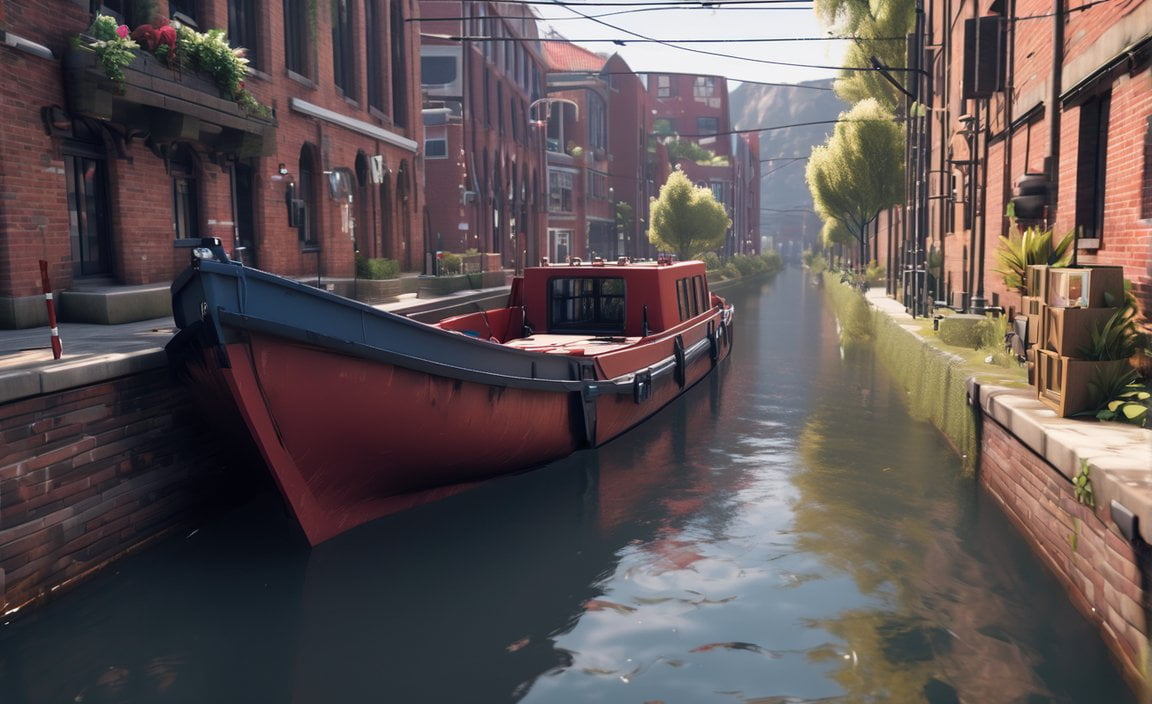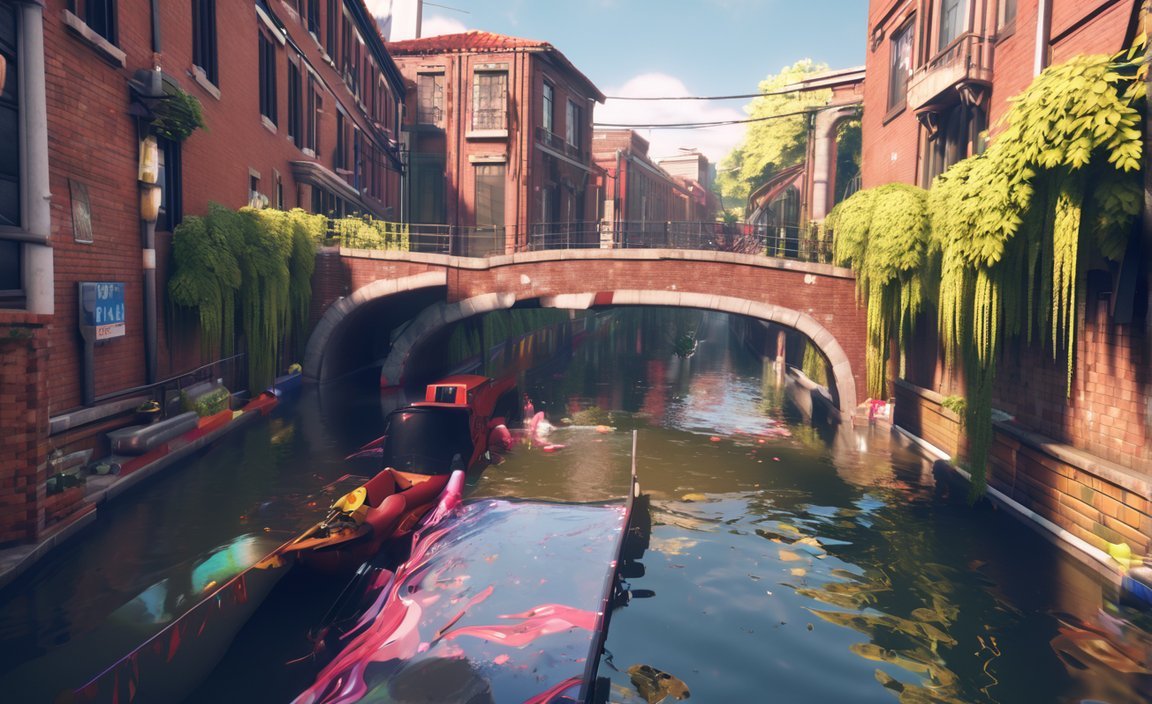Are you looking for a comprehensive analysis of the pros and cons of canal lining strategies? In this article, we will delve into the advantages and disadvantages of canal lining, exploring its potential benefits for efficient water resource management and irrigation projects. We will evaluate various lining materials, assessing their associated costs and environmental impact. Join us as we navigate through the complexities of canal lining methods, providing unbiased insights and helping you gain a comprehensive understanding of this crucial aspect of water management.
Key Takeaways:
Advantages of Canal Lining:
– Reduced water loss through seepage, leading to significant water savings.
– Improved irrigation efficiency, reducing water loss to as little as 10% compared to unlined canals.
– Enhanced water quality by preventing contaminants from infiltrating the water.
Disadvantages of Canal Lining:
– High cost associated with installation and maintenance, posing economic challenges.
– Reduced groundwater recharge due to limited seepage into the surrounding soil.
– Environmental concerns including disruption of natural water flow and potential pollution from lining materials.
Advantages and Disadvantages of Canal Lining

When it comes to water resource management and irrigation projects, canal lining is a topic that requires careful evaluation of its advantages and disadvantages. By understanding the benefits and drawbacks of this technique, we can make informed decisions about whether or not to implement it. In this article, we will explore the advantages and disadvantages of canal lining, weighing the considerations surrounding cost, water loss, irrigation efficiency, groundwater recharge, and environmental impact.
Advantages of Canal Lining
1. Reduced Water Loss: Canal lining plays a crucial role in reducing water loss due to seepage. By adding an impermeable layer to the canal’s bottom and sides, the lining effectively prevents water from leaking into the surrounding soil. This translates into substantial water savings and ensures that precious water resources are efficiently utilized for irrigation purposes[^1^].
2. Improved Irrigation Efficiency: Lined canals offer improved irrigation efficiency by minimizing the amount of water required for irrigation. It has been observed that unlined canals experience water losses of up to 60%, whereas lined canals can limit these losses to as little as 10%. This enhanced irrigation efficiency not only conserves water but also allows for more precise water management and better crop productivity[^1^][^4^].
3. Improved Water Quality: Canal lining contributes to improved water quality by preventing contaminants from infiltrating the water. With reduced seepage, lined canals ensure that the water used for irrigation purposes remains cleaner and safer. This has a positive impact on crop health and can lead to improved yields[^1^].
Disadvantages of Canal Lining
1. High Cost: One of the major drawbacks of canal lining is its high cost. The materials and labor involved in installing and maintaining the lining can be expensive, making it a significant investment for irrigation projects. This cost factor may pose economic challenges and limit the feasibility of canal lining for some projects[^1^].
2. Reduced Groundwater Recharge: A negative consequence of canal lining is the reduced recharge of groundwater. The impermeable lining prevents water from seeping into the surrounding soil, limiting the replenishment of groundwater resources. This reduction in groundwater recharge can lead to water scarcity and disrupt the local hydrological system[^1^].
3. Environmental Concerns: Canal lining may have unintended environmental consequences. The use of impermeable lining materials, such as concrete, can interrupt the natural flow of water and disturb the ecological balance of surrounding ecosystems. Additionally, the production and use of these materials contribute to carbon emissions and environmental pollution[^1^][^3^].
In summary, the advantages and disadvantages outlined above emphasize the need for careful consideration when deciding whether or not to implement canal lining. While it offers benefits such as reduced water loss, improved irrigation efficiency, and enhanced water quality, the drawbacks, including high cost, reduced groundwater recharge, and environmental impact, must also be taken into account. Proper planning and assessment of the specific conditions and requirements of an irrigation project are essential to make well-informed decisions regarding canal lining.
[^1^]: Advantages and Disadvantages of Canal Lining – AboutCivil.Org
[^4^]: Canal Lining: Types, Properties, Merits & Demerits – Constructionor.Com
Canals offer numerous advantages and disadvantages that are worth exploring. If you’re interested in understanding the benefits and drawbacks of canals, check out our informative article on the advantages and disadvantages of canals. Trust us, you won’t want to miss out on this valuable information! Simply click here to dive into the world of canal exploration.
Coastal shipping presents its own set of advantages and disadvantages that are essential to acknowledge. To gain insights into the pros and cons of coastal shipping, make sure to read our detailed article on the advantages and disadvantages of coastal shipping. Click here to embark on a maritime journey of knowledge like no other.
Dredging is a fascinating process with its own share of advantages and disadvantages. If you’re curious to learn more about the strengths and weaknesses of dredging, our comprehensive article on the advantages and disadvantages of dredging is a must-read. Land on the waves of knowledge by clicking here and explore the depths of dredging like never before.
Disadvantages of Canal Lining

High Cost
One of the main disadvantages of canal lining is the high cost associated with the installation and maintenance of the lining. The materials and labor required for lining canals can be expensive, making it a significant investment. This cost may pose economic challenges for some irrigation projects. Implementing canal lining involves procuring the necessary lining materials, such as concrete or geosynthetic liners, and hiring skilled labor for the construction process. Additionally, regular maintenance and repairs may be required to ensure the effectiveness and longevity of the lining system.
Reduced Groundwater Recharge
Another drawback of canal lining is the potential impact on reducing groundwater recharge. When canals are lined, the impermeable lining prevents water from seeping into the surrounding soil. While this reduces water loss through seepage, it also limits the replenishment of groundwater resources. Water that would have naturally percolated into the soil and recharged groundwater reserves is now retained within the lined canal, reducing the available groundwater for other purposes. This reduction in groundwater recharge can have long-term implications for water availability and sustainability in the local hydrological system.
Environmental Concerns
Canal lining may also give rise to environmental concerns. The use of impermeable lining materials, such as concrete, can disrupt the natural flow of water and affect the ecological balance of surrounding ecosystems. The alteration in the natural hydrological cycle can impact the habitats of various species, including plants and animals that rely on the presence of water. Additionally, the production and use of lining materials may have a carbon footprint and contribute to environmental pollution.
When considering canal lining, it is important to conduct a comprehensive cost-benefit analysis that weighs the advantages and disadvantages. While canal lining offers benefits such as reduced water loss, improved irrigation efficiency, and enhanced water quality, it is essential to carefully evaluate the impact of high costs, reduced groundwater recharge, and potential environmental consequences.
Sources:
– Advantages and Disadvantages of Canal Lining – AboutCivil.Org
– Canal Lining: Types, Properties, Merits & Demerits – Constructionor.Com
Key Takeaways:
– Canal lining can be costly, requiring investment in materials and labor for installation and maintenance.
– Lined canals restrict groundwater recharge, reducing the replenishment of groundwater resources.
– Environmental concerns may arise from the disruption of natural water flow and the carbon footprint associated with lining materials.
Properties of Canal Lining
Canal lining plays a vital role in water resource management and irrigation projects. By evaluating the advantages and disadvantages of canal lining, we can gain a comprehensive understanding of its properties and determine its suitability for different applications. In this section, we will explore the properties of canal lining, highlighting its benefits and drawbacks.
Reduction in Losses Due to Seepage
One of the key properties of canal lining is the reduction in water loss due to seepage. Unlined canals can lose up to 60% of the water, while lined canals can significantly reduce water loss to as little as 10%. This remarkable decrease in seepage helps to enhance the water duty and improve irrigation efficiency. With canal lining, water is retained in the canal, ensuring that it reaches the intended destination, optimizing the use of this precious resource.
Prevention of Weed Growth
Another important property of canal lining is its ability to prevent weed growth. Weeds can be a nuisance in irrigation systems, as they can spread rapidly and impede water flow. However, when canals are lined, the growth of weeds is limited, ensuring that water flows freely without obstruction. This not only improves irrigation efficiency but also reduces the need for manual weed control measures, saving time and effort.
Now that we have explored the properties of canal lining, let’s delve into the advantages and disadvantages associated with this technique.
Advantages and Disadvantages of Canal Lining
Advantages of Canal Lining
Reduced Water Loss: One of the primary advantages of canal lining is its ability to reduce water loss due to seepage. By adding an impermeable layer to the bottom and sides of the canal, the lining prevents water from leaking into the surrounding soil, resulting in significant water savings. Lined canals can reduce water loss to as little as 10%, compared to the 60% loss in unlined canals. This enhanced water conservation allows for optimized irrigation practices and more efficient water management.
Improved Irrigation Efficiency: Canal lining can also improve irrigation efficiency by reducing the amount of water required to irrigate crops. With reduced water loss, the water reaching the fields is utilized more effectively. This not only ensures that crops receive the necessary water but also minimizes unnecessary water consumption. Improved irrigation efficiency leads to higher crop yields and fosters sustainable agricultural practices.
Improved Water Quality: Another advantage of canal lining is the potential for improved water quality. By reducing seepage, lined canals prevent contaminants from infiltrating the water. This results in cleaner and safer water for irrigation purposes, promoting crop health and productivity. Additionally, improved water quality can have positive environmental impacts by minimizing the contamination of natural water sources.
Disadvantages of Canal Lining
High Cost: One of the main disadvantages of canal lining is the initial high cost associated with its installation and maintenance. The materials and labor required for lining canals can be expensive, making it a significant investment. However, it is important to consider the long-term benefits and potential cost savings in terms of reduced water loss and improved irrigation efficiency.
Reduced Groundwater Recharge: Canal lining can also have a negative impact on groundwater recharge. Lined canals prevent water from seeping into the surrounding soil, limiting the replenishment of groundwater resources. This reduction in groundwater recharge can lead to water scarcity and imbalance in the local hydrological system. It is crucial to carefully evaluate the water availability and consider alternative methods to ensure sustainable groundwater management.
Environmental Concerns: Canal lining may pose certain environmental concerns. The impermeable nature of the lining can disrupt the natural flow of water, affecting the ecological balance of surrounding ecosystems. Additionally, the use of lining materials, such as concrete, can have a carbon footprint and contribute to environmental pollution. It is essential to assess the potential environmental impacts and explore environmentally-friendly alternatives when considering canal lining.
Key Takeaways:
- Canal lining reduces water loss due to seepage and prevents weed growth, enhancing water duty and improving irrigation efficiency.
- Advantages of canal lining include reduced water loss, improved irrigation efficiency, and improved water quality.
- Disadvantages of canal lining include high initial cost, reduced groundwater recharge, and potential environmental concerns.
Sources:
[^1^]: Advantages and Disadvantages of Canal Lining – AboutCivil.Org
[^4^]: Canal Lining: Types, Properties, Merits & Demerits – Constructionor.Com
FAQ
Q1: What are the advantages of canal lining in irrigation?
A1: The advantages of canal lining in irrigation include reduced water loss due to seepage, improved irrigation efficiency, and improved water quality.
Q2: What is canal lining and how does it work?
A2: Canal lining is a technique used to reduce water loss and improve irrigation efficiency in canals. It involves adding an impermeable layer to the bottom and sides of the canal to prevent water from leaking into the surrounding soil.
Q3: What are the disadvantages of canal lining?
A3: The disadvantages of canal lining include the high initial cost of installation and maintenance, reduced groundwater recharge, and potential environmental concerns.
Q4: What are the properties of canal lining?
A4: The properties of canal lining include its ability to reduce losses due to seepage and prevent weed growth in the canal.
Q5: Where can I find more information about canal lining?
A5: You can find more information about canal lining, including its types, properties, merits, and demerits, on websites such as Constructionor.com and AboutCivil.org.
- China II Review: Delicious Food & Speedy Service - April 17, 2025
- Understand Virginia’s Flag: History & Debate - April 17, 2025
- Explore Long Island’s Map: Unique Regions & Insights - April 17, 2025
















